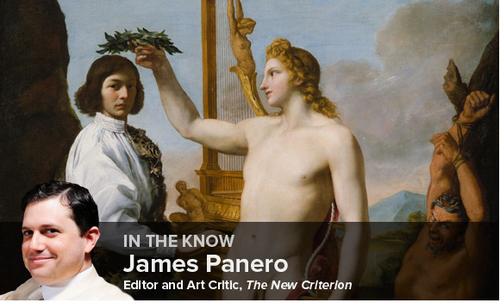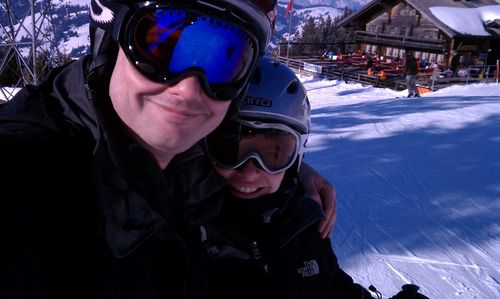A winter spent skiing with Buckley in Switzerland, and being his assistant and protégé.
The winter after my senior year in college, Bill Buckley invited me to Gstaad, Switzerland, to help him on a novel called Spytime: The Undoing of James Jesus Angleton. Our program there followed much of what he had been doing each year. For a little over a month, he and his wife Pat and a small staff took over a chalet in the ski area, in a village called Rougemont. Somewhere in Switzerland, Bill had stored a crate of old dictionaries, videocassettes of Brideshead Revisited, abstract paintings, and leopard-print throws. In the days before his arrival, the staff used these items to convert the chalet into another Buckley office and home. And each year, Bill brought along a young college graduate to be his writing assistant. He put us up in an inn just down the hill.
I first got to know Bill, a bit, as the undergraduate editor of The Dartmouth Review. Jeffrey Hart showed him a piece I had written — I think it was a review of the movie Kids — and Bill wrote back approvingly. That translated into an internship at NR, then an editorial job. But I had really met him only a handful of times when he called me into his office and asked me if I liked to ski. I said, “Yes, Mr. Buckley, I do.” He put his hand on my shoulder and said, “Call me Bill.” The invitation to Switzerland came the next day.
“There is never a good time for a busy man to take a vacation,” Bill once said. “And since there is never a good time, he might as well take it whenever we wants.” But Bill never vacationed, even on vacation. He never took weekends off, most likely because his greatest fear was boredom.
So Bill gave himself the assignment of writing a book each year during his stay in Gstaad. The winter I was there, it wasn’t one of his Blackford Oakes novels, but it was a Cold War thriller. The book was a fictionalized first-person story as told by James Angleton, the real life head of U.S. counterintelligence. Angleton’s archenemy, in our book as in real life, was Kim Philby, the famous double agent from the British secret service. Philby had been recruited by the Communists as one of the Cambridge Five and defected in 1963 to the Soviet Union, where he was awarded the Order of Lenin. For Angleton, Philby was the spy who got away, and our novel hinted that it drove Angleton insane.
So in Gstaad, while everyone else went on holiday, we made a novel. Bill woke up at 4:30 every morning. I drove up to the chalet, overlooking the mountain face of the Videmanette, at 7:30. Bill always lent out his four-wheel-drive Peugeot to his young assistants. He handed me the keys our first day at the top of the hill and gave me a quiz about the route to get his morning newspaper. I didn’t want to admit I couldn’t drive stick. So I learned on the road from my hotel to the chalet, and promptly burned out the clutch.
We worked for several hours together every morning, our desks catty-corner to each other. The Goldberg Variations — the Glenn Gould recordings — played in the background as Bill typed. If Bill wanted to set a scene in Beirut in the 1960s, he’d ask me to come up with the detail. Then we went to lunch in one of the hamlets dotting the resort, or in the private restaurant atop the Wasserngrat called the Eagle Club. Here we’d discuss what should happen next in the plot. How about we hide a gun in the camera? Let’s kill off so-and-so. He had very little sense of where his book would go. Then we would ski for a few hours. Then we would return for the afternoon session.
Buckley had it in him to write 1,500 words a day — after a month, you have a novel. But those 1,500 words needed a second pair of eyes, and that’s where I came in. In his first drafts, character names changed. Dates were all wrong. I helped fix those in the afternoon sessions. Then at 7 p.m., Julian, his cook, brought in a kir — white wine with a drop of crème de cassis — for each of us. We’d pull out the Dutch cigars and discuss the day’s progress.
Things moved quickly into evening. The Buckleys almost always included me in their entertaining, which was Pat’s full-time job in Gstaad (she didn’t ski): Where should we sit the princess of Denmark, the actor Roger Moore, the pretender to the throne of Greece, the would-be czar of Russia, and Julian, do we have enough fois de canard for everyone? “James,” Bill would say, “you sit here next to me.” As every young person learned around Bill, he always wanted to hear your opinion, even if you didn’t have one. To close out the night, he would have me sing standards while he accompanied me on a piano. This promptly cleared out the house. He liked to be in bed by 10. We repeated it all the next day.
The time I had with him was a fairy tale, of course, but it was also an intense experience. I imagine it was something similar for all the young people he brought in over the years, a list that runs from Neal B. Freeman and Linda Bridges and Paul Gigot to Peter Robinson and Lawrence Perelman and Danilo Petranovich — and to more than one or two apostates. Being so close to Bill could be like staring at the center of the sun. It certainly caused me to reevaluate the writer I wanted to be. After Gstaad, I ended up enrolling in an art-history graduate program before moving on to my current job at The New Criterion. Bill and I kept up with overnight sails across Long Island Sound. He also asked me to write to him often and was encouraging in whatever turn my life was taking.
In Miles Gone By, his most personal collection of essays, Bill devotes more than one chapter to his childhood music instruction. In addition to weekly piano tutorials, the Buckley children were exposed to an hour of phonograph listening four times a week by a tutor named Penelope Oyen. Buckley tells us that “Miss Oyen loved music with a passion. The use of that word here is not platitudinous. Because Penelope Oyen would weep when listening to music. Not always; not for every composer; but almost always for J. S. Bach. . . . I believed her when she said that music is very serious business. As poetry is very serious business. As art of any sort is very, very serious business: that which is sublime can’t be anything less.” Certainly, this sense for the sublime connected with his faith in God. His greatest regret, he said late in life, was that he wasn’t better at prayer.
This passage reminded me of what it felt like to be there in Gstaad. Bill was never a master at the piano, but he was a great virtuoso. In Switzerland, like a sort of music appreciation, Bill was giving out Buckley appreciation.
Bill found music in words. He played them into his writing, channeled Bach through the computer keyboard. He was probably second only to Shakespeare in bringing words into circulation. “Why do you want to be a party to diminishing the choices that you have, when you’re dealing with a language which you worship for its beauty?” he once said. This virtuosity combined with his great vocal presence. Willmoore Kendall once said that Buckley could do as much with his voice as Laurence Olivier.
I am still amazed how much he shared these gifts with someone who was an entry-level editor, and how much he believed in my help. Even when we were together in Gstaad, and emphysema was starting to take its toll on him, his talents were dazzling. “A sort of personal ebulliency sustains me,” he once said in an interview.
David Brooks said that “for all of Buckley’s contributions to conservative ideas, his most striking contribution is to the conservative personality. He made being conservative attractive and even glamorous.”
Bill Buckley’s unabashed life performance was his answer to the fallen century he had been born into, which he was determined to stand athwart. At the heart of this conservatism was this great generosity, to convey his brilliance through example, to reach across generations, and to have us close enough to listen in.
—This piece is based on a speech delivered at Yale’s William F. Buckley Jr. Program earlier this fall.

